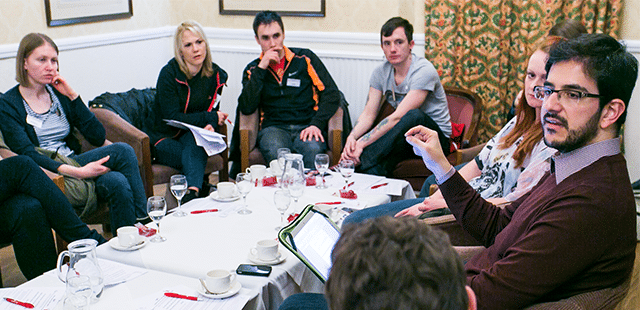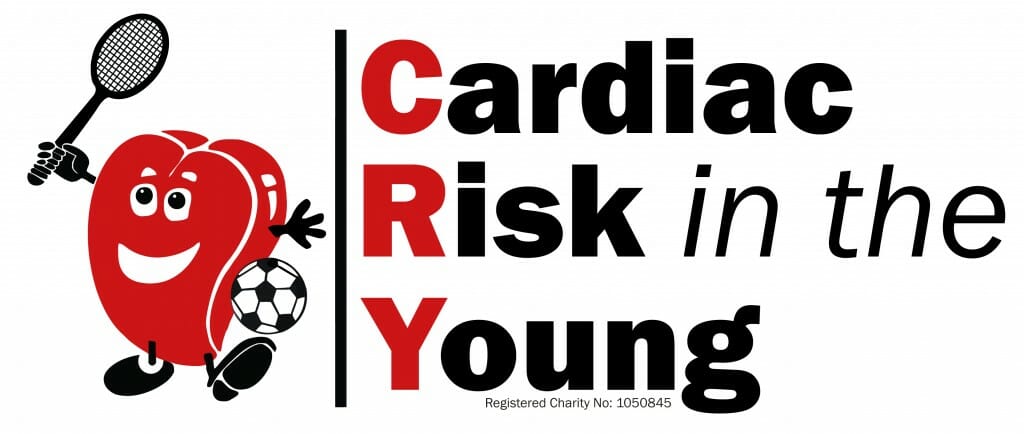Since CRY was first launched in 1995, there’s always been a huge focus on supporting families and individuals through the aftermath of a young sudden cardiac death – as well as funding research and screening to help prevent these devastating tragedies. That focus has never wavered in CRY’s 25-year history and has been at the forefront of our work and vision – but, it’s still important to emphasise (particularly as we look back over our past) that’s not all we do…
From very early on in our journey and development as a charity, it became clear that there was an unmet need to support those young people who had been diagnosed with – and treated for – a serious cardiac condition, providing them with information, education and most importantly opportunities to meet up with others in a similar situation, as they learnt to navigate to their ‘new normal’ and readjust to daily life and activities.
As with many of CRY’s early milestones and developments, the initiative was very much pioneered by CRY’s founder, Alison Cox MBE, who has always remained a passionate supporter, advocate and champion of this inspiring group of young people.

Launched in October 2002, the group we now know as myheart was initially called The Surgery Supporters Club, reaching out to young people who had been diagnosed with an inherited or congenital heart condition and had undergone treatment (whether surgery or long-term medication). And, what became clear from the very outset was that everyone who came along found the personalised help, support and individual information invaluable (and simply not available anywhere else).
There were just 6 young people at that first meeting, held at CRY’s previous head office in Tadworth, Surrey. Speaking at the time, one 16-year-old boy (who had been diagnosed with Brugada syndrome and fitted with an ICD following a near fatal cardiac arrest, 12 months before) said;
“Our first meeting was very relaxed and we asked questions on issues that we wouldn’t normally ask our cardiologists. It was so good to talk to others who have been through similar experiences as myself. We – the founder members of CRY’s SS Club – all agreed that there needs to be more done to raise awareness about ‘sudden death syndromes’ and more support for young people and families affected by them. I wish I could have talked to someone before I had my implantation. You have so many things you want to ask but you don’t want to ask your parents as they are as uptight about it as you, and you don’t want to ask the doctors as they may think that you are being silly. This club should help solve these problems, because it’s young people talking to other young people.”
From there, CRY’s (and possibly, the UK’s) first ever support group for young people, following the diagnosis of a hidden heart condition was born and the mission statement devised then, was much the same then as it is now;
“… to provide personalised help, support, and information to individuals who have been diagnosed with a potentially life-threatening inherited or congenital cardiac condition… a support system for individuals to help develop effective coping strategies and reduce social isolation.”
Over the years as awareness of CRY grew, so did interest and membership of the Surgery Supporters Club. Meetings were held twice a year, originally at the CRY office, then branching out to meeting rooms at a hotel in neighbouring Reigate, followed by venues in Central London.
We also began to notice a clear link to the growth of CRY’s nationwide screening programme – in simple terms, as more young people were screened, more young people were identified, diagnosed and treated and therefore, more young people were coming forward seeking support and advice from their peers.
From day one, all those associated with CRY’s SS Club were thirsty for knowledge and keen to share their experiences. A regular programme of informal Q&A sessions was arranged, led by Professor Sanjay Sharma, with expert input from other cardiologists. There have also been special sessions held during meetings on issues such as ICDs, with opportunities to send in questions, answered by former ICD and Pacing manager at St George’s NHS Hospital Trust, Sue Jones.
In 2013, CRY’s Surgery Supporters Club rebranded as myheart. At a high-profile Parliamentary Reception, a new resource was unveiled, featuring 10 personal ‘essays’ from young men and women, recounting their own story of suddenly being diagnosed with a heart condition. The booklet also included an inspiring introduction from double Olympic gold medallist, Tom James, who himself had been diagnosed with a heart condition known as Atrial Fibrillation in the run up to the London 2012 Games.

Alison Cox told guests and MPs; “It can be mind-blowing for a young person when first diagnosed. And, many of those who come to us for advice often do so after the sudden and unexpected death of a parent, sibling or other relative which has possibly been the only indication that any form of genetic abnormality existed in their family. Feelings are running high – fear, anger, insecurity. They desperately need the reassurance that their lives are not over – in fact, in some cases, following successful treatment, they are only just beginning. But often, the only person who can do that convincingly is someone else who is going through the same experience as themselves.”
In 2015, the group officially came under the supervision of Dr Michael Papadakis (below, right), one of the key doctors in Professor Sharma’s team based at St George’s, University of London.

Thanks to his dedication and commitment, combined with the obvious ease and rapport he has with the young people within the group, it really grew from strength to strength – with Michael also having overseen the development of more than 65 videos created exclusively to cover many of the issued faced by young people, following the sudden and unexpected diagnosis of a potentially fatal heart condition.
One year on, a new-look website was launched. It was not only engaging and ‘youthful’ but also quickly became an invaluable information portal, packed full of bespoke medical information, expert advice, newsletters, a members’ area, FAQs and further video content (including many recorded by Professor Sharma about a range of conditions and recent research – a topic which is always of great interest to those diagnosed with a cardiac condition). Now, the ‘hub’ also provides a space for testimonials and blog content about personal experiences and the journey from diagnosis to resuming daily life.
In 2017, the group’s social media presence was further amplified with the launch of its own YouTube channel which continues to be populated with important and current content. This was soon followed by a Facebook forum for members’, too.
Our myheart members have continued to be regular guests at CRY’s annual Parliamentary Reception in Westminster, not only enjoying another opportunity to come together and to meet up with CRY’s team, but also serving as a really positive reminder that a diagnosis of a cardiac condition does not mean a future of ill health, inactivity and missed opportunities.
Far from it!
So many of the young people associated with myheart have reached amazing goals, and it’s always wonderful when we hear updates about their achievements, whether academic, professional, sporting and personal, to name just a few aspects!
Over the years, myheart members have spoken in Parliament, met celebs such as David Walliams, Pixie Lott and gold medallists, carried the Olympic torch, and even been asked to ‘toss the coin’ at the start of the Wimbledon men’s final!
Many have also become involved with national and regional media opportunities, always willing to speak to journalists about their own personal stories, the importance of cardiac screening and ‘life after diagnosis’.
One myheart member has recently played a pivotal role in helping to facilitate a major research project funded by CRY looking at “safety and outcomes of a structured exercise programme in young patients with hypertrophic cardiomyopathy”.
And another – one of the CRY SS Club’s founding members (now aged 40 and with three young children) has developed the hugely successful fitness platform, “Million Metre Challenge” which, next month, will be rolled out even further as part of a new virtual fundraising collaboration with CRY.
Watch this space for further details…!
Recently, myheart has come under the supervision of Consultant Cardiologist Dr Sabiha Gati (formerly a CRY-funded Research Fellow and now Consultant at the Royal Brompton & Harefield NHS Foundation Trust).
As part of an interview for the CRY website, Dr Gati explained; “The myheart meetings allow clinical staff and affected young patients to become more acquainted with each other and permit a more relaxed and reassuring environment. It’s also good to hear from them what they would like more from us as clinicians in our clinics. My group members get to know me as a person rather than the ‘doctor’ who simply manages their heart condition. I have a mantra, ‘the purpose of life is to make a difference to the life of others.’ After myheart sessions, I feel invigorated and go home feeling I have made a genuine difference.”


